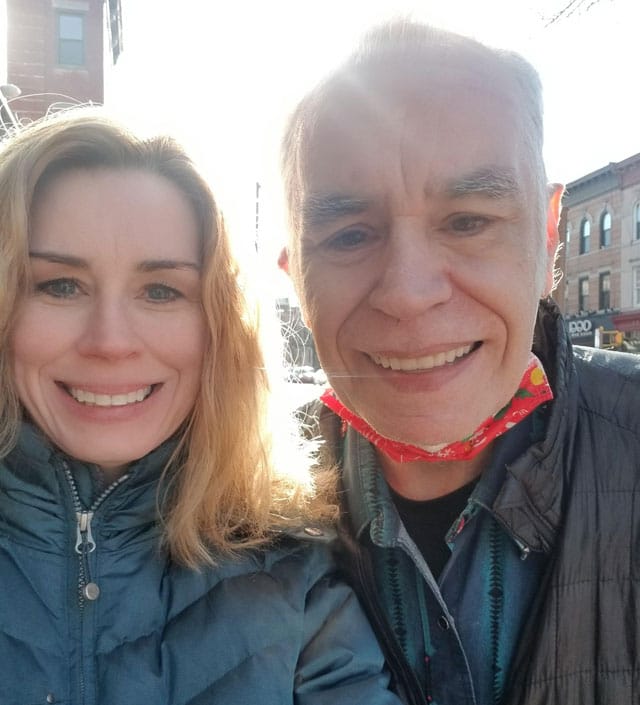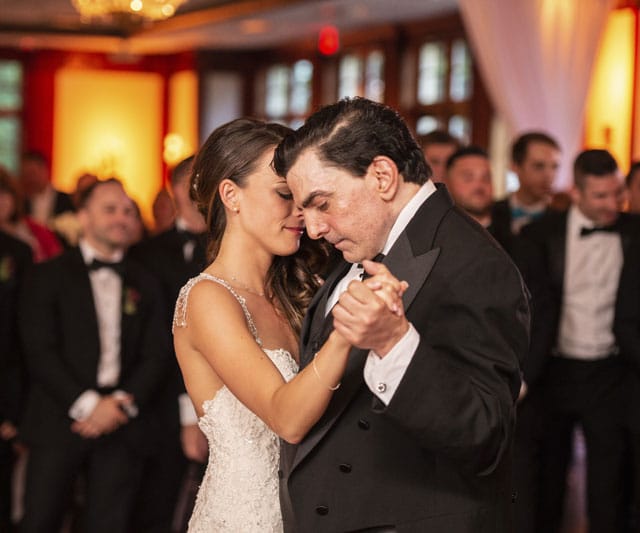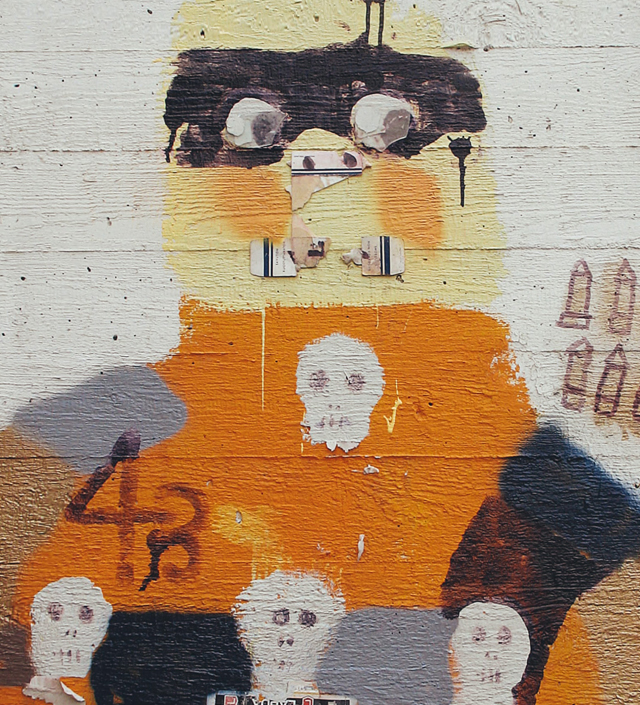The day after Thanksgiving two years ago, Dawn Santoriello started to delete what at a glance seemed like another email from a Nigerian prince. She laughed that this one claimed to be her brother.
“I thought, ‘This is definitely a scam,” says Santoriello, founder and CEO of DS Financial Strategies near Philadelphia. “I thought, ‘I know my biological mom, and my biological dad is dead.’”
She thought twice, only because she has a complicated family. A lovely Long Island family adopted her and her half-sister from their grandmother, who had custody in their early childhood after authorities removed them from their drug-addicted mother’s care. The grandmother also had taken in their half-brother.
Santoriello says she thought she knew the odd DNA matches she might get from her 23andMe test, because she always knew her biological mom and grandmother. They told her that the man she called “Dad,” who died when she was 2, was her biological father. He had a daughter she thought was another half-sister.
As it turns out, her dad was neither that man nor dead.
Her dad had lived nearby, off-and-on, for those almost 40 years, among his extended family — including the new teen-age half-brother who emailed her. She also located a paternal aunt and a cousin, “who is my best friend now,” Santoriello says.
“It’s crazy but awesome,” Santoriello says.
Blazing business
Consumer DNA testing has grown steadily in popularity since National Geographic started its Genome Project in 2005. It’s projected to be a $2.7 billion market by 2030, according to Research and Markets data report.
Family Tree DNA started marketing direct-to-consumer DNA tests for genealogists’ tool kits in 2006. 23andme started marketing DNA tests primarily for genetic health data and research in 2007. In 2012, Ancestry took the market by storm by marrying DNA test kits with family trees and public record databases.
Each company uses some different technologies: Y-chromosome, mitochondrial and autosomal. Each tests different DNA strand sequences to match with other consumers in their own databases. All have good reliability, according to consumer reviews. Some can be shared between platforms. Most cost between $50 and $100, often discounted or offered with accoutrements.
The home cheek swabs and spit tests are used to:
- Discover relatives, including biological roots for adoptees.
- Validate family trees.
- Learn ethnic and racial background.
- Share family medical history.
- Prove identity for civil records.
- Link to immigration records to apply for dual citizenship.
- Contribute data anonymously for medical and ethnic migration studies.
- Aid in solving cold-case murders in jurisdictions where privacy laws allow.
Tools of many trades
Michael D. Whitty’s client had a problem with his birth certificate. It floated away in the floods of Hurricane Harvey in 2017.
“His birth state had made it harder to get a new one if your name does not match the birth name,” says Whitty, a partner focused on estate law at the firm Freeborn & Peters LLP in Chicago.
Since the Sept. 11, 2001, terror attacks on the U.S. laid bare that accurate identification is vital to national security, name changes must be proved by official documents.
The client had found out at age 55 that he was really a stepson of the man he called “Dad” his whole life, Whitty says. The client didn’t have his paternity information to document his apparent name change after birth.
Whitty helped him use the array of Ancestry and 23andMe genealogy tools to get the information he needed for a new birth certificate.
“Ancestry provided a wealth of information, and even some photos of the birth father showing an amazing resemblance,” Whitty says.
Proof in the pudding
Striking resemblance in photos is a common discovery among relatives united by DNA tests.
Santoriello says that as soon as she saw a photo of her dad, she marveled at how no one put 2 and 2 together in those 40 years they both socialized in the same town. He even lived for a time on the same street where she grew up with her adopted parents.
When she met him for the first time that Christmas Day two years ago, it seemed even more inexplicable.
“‘How could you not recognize me?’” she says she asked him. “He said he wasn’t thinking he had a child, so it never occurred to him to think about that.”
She says he confided, “I’ve slept with about 4,000 women, so I don’t remember that night.”
Many find more than their looks in common.
Planner Linda Gadkowski of Beacon Financial Planning in Hyannis, Mass., met her own half-sister for the first time when she was 42. She had known since her father died when she was about 19 that he had had a previous wife and family. But Gadkowski was busy with college and life and hadn’t given it much thought.
Until her older half-sister got in touch more than two decades later.
“I met her,” Gadkowski says. “We had on matching outfits. We had matching couches. We each had three children. We each had similar husbands. We each finished each other’s sentences. She was a red-head; I was a blond. Her brother was a blond; my brother was a red-head.”
Right off the bat, they found they had 10 things in common.
Gadkowski’s cousin had a related experience. Her adopted son found his birth mom through a home DNA test.
“He and his birth mom look just alike,” Gadkowski says. His birth mom had been a teen who went on to college and moved from town. “They found each other, and they’re a fit. He’s happy they found each other, for health reasons, if nothing else.”
Care to share?
One of Gadkowski’s clients marveled at likeness when a California woman called him out of the blue saying she was his daughter.
“He thought it was a hoax wanting to get money from him,” Gadkowski says. Then he remembered a teen fling. “It wasn’t a hoax. He had a daughter. He had impregnated a girl who never, ever told him that she was pregnant before they parted ways.”
The newfound daughter, who had been adopted and is now in her 50s, sent a photo of herself. He was struck by how much she looked like his daughter born to his wife about seven years later.
“They look just like sisters,” Gadkowski says. “The DNA proved it.
“This has presented some estate planning issues for him, to try to ‘make good,’ if you will,” she says.
The client added his new older daughter in his estate plans.
“It wasn’t a catastrophe,” Gadkowski says.
Whitty recalls a client similarly surprised to learn an old romance had produced a child. The client was happy to have the newfound son in his life and embraced him, but he didn’t want his estate to treat him exactly as his other child.
That newfound son had been raised well and didn’t need money, Whitty says. Their solution was to carve out a beneficiary spot in his life insurance policy, which can be quicker to administer and is less easily challenged than the estate, in the event resentments emerge after the client is dead.
He might have done more if the son had had children. “When there are grandchildren, it pulls on heartstrings,” Whitty says. These are the kinds of things that “can exacerbate conflict already there.”
Legal realities
It’s not always the case that unexpected new family is welcome.
“People who had counted on family mysteries staying buried may not be able to count on that anymore,” Whitty says, thanks to direct-to-consumer DNA tests.
Whitty uses DNA tests to broach the topic in a nonjudgmental way with couples planning their estates.
“The advent of 23andme (and others) make it more likely that out-of-wedlock children could make an appearance, before or after their parents’ deaths, and that does change the dynamics. One way I adapt to that in my estate practice is that we specifically identify those children that are to be counted and we expressly exclude any others born before the date of the instrument,” whether a will or a trust, Whitty says.
“I haven’t run into a problem that hasn’t been solved by that language,” he says.
Without a will or trust, out-of-wedlock children can turn up to make a claim at any time and upend an executor’s work.
Legal trends even before DNA testing have moved toward treating children born outside of marriage equally to those born in marriage.
“It’s not always a given that people are born into wedlock, so why should we penalize those born out of wedlock?” asks Whitty, referring to an observation made in William Shakespeare’s “King Lear.” “It’s not the child’s doing.”
No matter what surprise arises, “it’s usually possible for families to reach a negotiated settlement, if they are getting good legal advice.”
The last puzzle pieces
Whitty says he thinks sharing medical histories is one of the most important applications of DNA matching.
Santoriello’s discovery left her with at least one new liability. She now has to answer questions on her life insurance policy differently regarding family history of potentially hereditary or genetic diseases, such as cancer and heart disease.
“It might cost me a little more in premiums, but I have to be honest,” she says.
Santoriello’s newfound aunt has placed her onto the family’s Ancestry tree and gave her a link to access it. She had thought she was half Italian, but it turns out her heritage is almost exclusively British, a descendant of the Wedgewood china family.
Her aunt also gave her the family jewelry, not just because she’s the only girl in the family, but “’Grandma would have loved for you to have it. You’re the spitting image of her,’” she said.
And, even though her dad has lived a colorful, “very different lifestyle, totally opposite of mine,” as an occasional limo driver for counterculture celebrities including Andy Warhol and Janis Joplin, Santoriello says he calls her every week now.
“Finding your dad when you’re older doesn’t replace what you lost,” Santoriello says. “But I get the love now.”
Paying it forward
Santoriello embraces her newfound family as an extension of her spiritual quest.
She writes about that personal journey in her book, “Manifest and Invest: Create a New Relationship,” due to be published in January. She also is author of “The Spiritual Path to Prosperity … The Truth about Money Revealed.”
Whitty offers this advice, now that discoveries of long-ago love children and adoptions are common: Break the news to the family before you die, or at least write a letter to be used if and when they discover your secrets. Genealogy platforms and their DNA tests make this likely.
He used those tools to help a second cousin of his own, who he met on 23andme, find her birth parents. She had been adopted as a baby.
“It was nice to provide that help. I didn’t have pictures of her birth mother, but I had pictures of her mother’s siblings,” Whitty says.
He suggests approaching newfound family with caution and diplomacy.
“Never ask for anything more than getting acquainted, sharing stories, and sharing medical histories,” Whitty advises. “Very few such long-lost-then-found relatives are going to want to bring the new arrival in as a full family member.”
Linda Hildebrand is a longtime newspaper editor and consumer reporter.







